As digital trends continue to evolve, so does the way audiences search for and discover information online. Generative Engine Optimisation (GEO) is the latest strategy to emerge, especially in the wake of AI-powered platforms like ChatGPT, CoPilot, and Gemini. This post explores what GEO is, why it matters, and how it can transform your brand‚ visibility in a world increasingly influenced by artificial intelligence.
Moving Beyond SEO: What is Generative Engine Optimisation (GEO)?
For years, Search Engine Optimisation (SEO) has been the go-to strategy for improving digital visibility, focusing on keyword optimisation, link-building, and rankings on search engines like Google. However, with the rapid rise of AI-driven search, Generative Engine Optimisation (GEO) is creating a new approach focused on optimising content for AI platforms.
Instead of prioritising traditional search rankings, GEO makes sure your content meets the needs of AI algorithms that deliver contextually relevant answers. With GEO, content is structured to respond directly to user intent, making it more likely to be selected as a recommended answer by AI systems.

Why GEO is Essential for Brands Today
So, why is GEO important? As users increasingly rely on AI-driven platforms to ask questions and get personalised recommendations, brands must adapt to stay relevant. Here are three key reasons why Generative Engine Optimisation (GEO) is the future of digital marketing:
AI Recommendations Shape Discovery
AI-powered platforms like ChatGPT and CoPilot select content based on how well it aligns with the specific needs and intent behind user queries. GEO enables businesses to capitalise on this, creating content that AI sees as valuable and trustworthy.
Relevance Trumps Rankings
Traditional SEO is focused on search rankings. However, GEO prioritises relevance over ranking, focusing on delivering the best possible answer. Content structured for GEO is primed to appear in AI recommendations, reaching users exactly when they need it most.
Future-Proof Your Digital Strategy
AI-based discovery is not just a trend; it’s the future. By investing in GEO now, brands are preparing for a world where AI-driven recommendations will likely replace traditional search engines as the primary source of information.
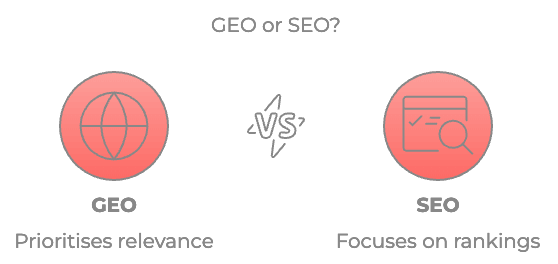
How GEO Works: Key Elements of Generative Engine Optimisation
Generative Engine Optimisation takes a user-centred approach that aligns with the ways AI interprets and delivers information. At All Advertising, we employ several strategies to help our clients optimise their content for AI platforms. Here’s an overview of the GEO tactics that make your content ready for the next generation of digital search:
Intent-Based Content Structuring
GEO begins with understanding what users are really looking for and how AI systems interpret those needs. By focusing on intent, we structure content in a way that addresses the core of user questions, making it easier for AI to recommend it as a valuable answer.
Enhanced Schema Markup and Structured Data
GEO isn’t just about text; it’s also about context. Using schema markup and structured data helps AI platforms understand the finer details of your content. This boosts the chances of AI selecting your content as a top recommendation.
Optimised FAQs and Knowledge Bases
AI-driven search often relies on FAQ and knowledge base formats because they provide clear, direct answers. We optimise these areas to make your content AI-friendly, enhancing its likelihood of appearing in response to relevant user questions.
Continuous GEO Updates and Monitoring
GEO requires a dynamic approach, as AI algorithms are constantly evolving. At All Advertising, we stay up-to-date on the latest AI trends, continuously refining our GEO strategies to ensure our clients’ content remains visible and relevant.
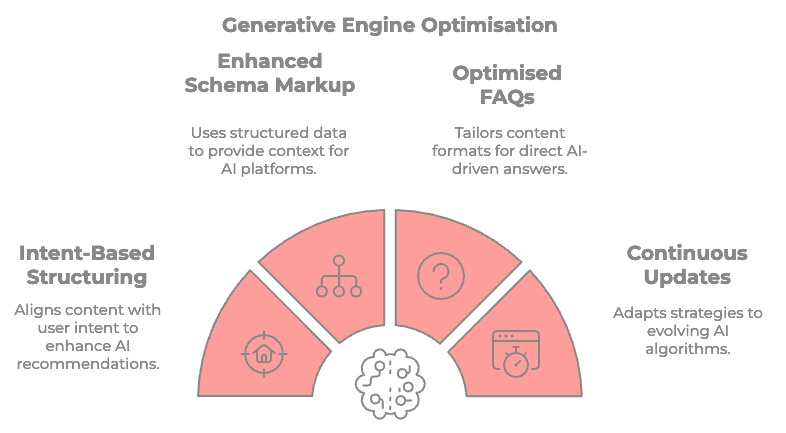
GEO vs. SEO: Do You Need Both?
Absolutely. While GEO is focused on optimising for AI-driven recommendations, SEO remains essential for traditional search engines. Both strategies have their place in a comprehensive digital strategy. SEO helps your website rank on platforms like Google, bringing organic traffic through search engine results pages. Meanwhile, GEO ensures that your brand is present on AI platforms, where users increasingly turn to ask questions and find relevant answers.
For a truly future-proof approach, brands should consider incorporating both SEO and GEO, reaching audiences across traditional search and the rapidly growing AI-powered platforms. At All Advertising, we specialise in crafting strategies that leverage the strengths of both approaches, ensuring maximum visibility in today’s diverse digital landscape.
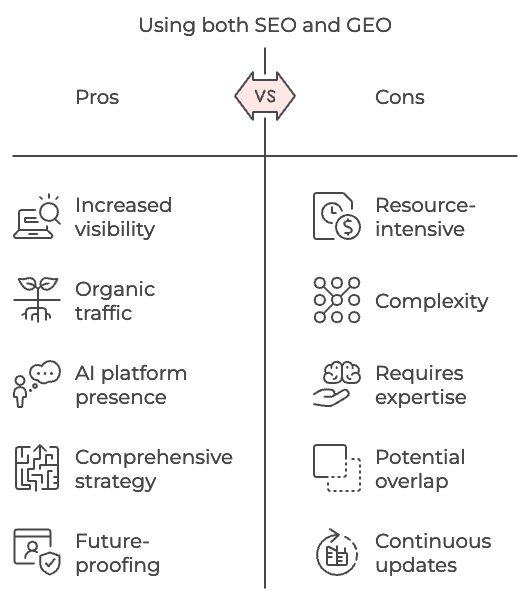
Why Generative Engine Optimisation is Worth the Investment
In an AI-driven world, content that stands out isn’t just about keywords and links about relevance, structure, and context. Generative Engine Optimisation (GEO) is the best way to adapt your digital presence to meet the needs of today’s AI algorithms. Here’s what makes GEO a powerful addition to any digital strategy:
Increased Visibility Across AI Platforms
As AI systems increasingly dominate search, GEO helps your content get seen by audiences on platforms like ChatGPT and CoPilot.
Enhanced User Engagement
Content that provides valuable answers boosts user satisfaction, leading to higher engagement and stronger brand trust.
Future-Ready Strategy
As digital search continues to shift, GEO is a forward-looking investment, positioning your brand to remain visible as AI-driven search takes precedence.
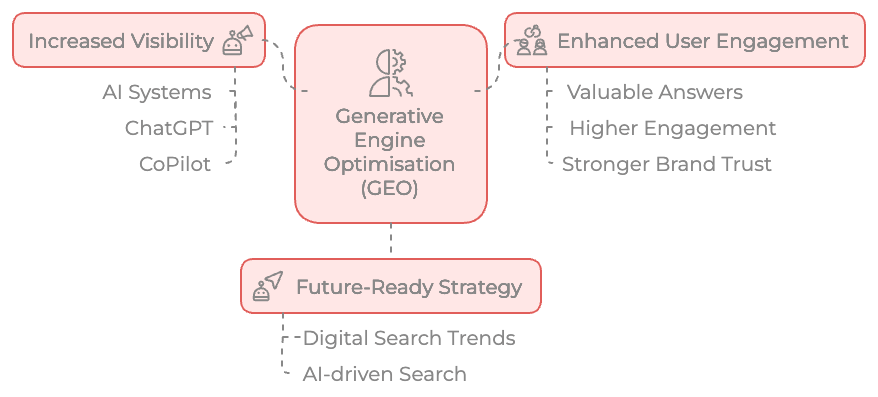
Ready to Explore GEO? Partner with All Advertising
If you’re ready to enhance your brand’s visibility on AI platforms, Generative Engine Optimisation (GEO) is the way forward. At All Advertising, we’re experts in both SEO and GEO, offering strategies that ensure your content resonates across both search engines and AI-powered recommendations.
Contact us today to learn more about how GEO can transform your digital presence and set your brand up for success in an AI-first world.
